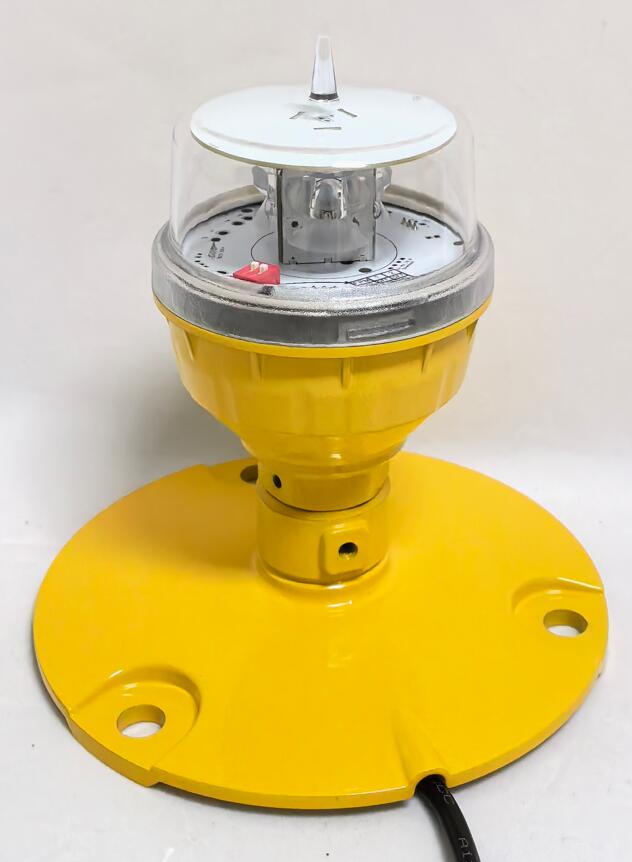Enhancing Safety and Efficiency: The Role of LED Heliport Perimeter Lights in Modern Aviation
In the fast-paced world of aviation, safety and precision are paramount. Heliports, whether located on hospital rooftops, offshore platforms, or urban centers, require reliable lighting systems to ensure safe takeoffs, landings, and operations during low-visibility conditions. Among the most critical components of these systems are LED heliport perimeter lights. These lights not only provide clear visual guidance but also offer energy efficiency, durability, and adaptability, making them indispensable in modern aviation infrastructure.
The Importance of Heliport Perimeter Lighting
Heliport perimeter lights serve as a visual boundary, marking the edges of the landing area and ensuring that pilots can accurately identify the heliport’s limits, especially at night or in adverse weather conditions. Proper lighting is essential for preventing accidents, minimizing pilot disorientation, and ensuring compliance with aviation safety standards. LED technology has revolutionized this aspect of heliport design, offering significant advantages over traditional lighting systems.
Advantages of LED Heliport Perimeter Lights
Energy Efficiency: LED heliport perimeter lights consume significantly less energy compared to conventional incandescent or halogen lights. This reduces operational costs and makes them an environmentally friendly choice, aligning with the growing emphasis on sustainability in aviation.
Durability and Longevity: LEDs are known for their long lifespan, often lasting tens of thousands of hours before needing replacement. This reduces maintenance requirements and downtime, which is particularly important for heliports that operate around the clock.

Brightness and Visibility: LED lights produce intense, focused illumination that ensures high visibility even in challenging conditions such as fog, rain, or snow. This enhances safety for pilots and ground personnel alike.
Customizability: LED heliport perimeter lights can be tailored to meet specific requirements, such as varying light intensities, colors, and flash patterns. This flexibility allows them to comply with different regulatory standards and adapt to unique operational needs.
Low Heat Emission: Unlike traditional lighting systems, LEDs emit very little heat, reducing the risk of overheating and making them safer to use in confined or sensitive environments.
| led heliport perimeter light |
| led heliport perimeter lights |
Applications of LED Heliport Perimeter Lights
LED heliport perimeter lights are used in a wide range of settings, each with its own unique challenges and requirements:
Hospital Heliports: In emergency medical services, every second counts. LED perimeter lights ensure that helipads are clearly visible, enabling rapid and safe landings for air ambulances.
Offshore Platforms: Heliports on oil rigs or wind farms are often exposed to harsh marine environments. LED lights, with their robust construction and resistance to corrosion, are ideal for these demanding conditions.
Urban Heliports: In densely populated areas, heliports must balance safety with minimal light pollution. LED lights can be customized to provide adequate illumination without causing unnecessary glare or disturbance to surrounding communities.
Military and Emergency Services: For operations in remote or disaster-stricken areas, reliable lighting is critical. LED heliport perimeter lights offer dependable performance in even the most challenging scenarios.
Innovations in LED Heliport Perimeter Lighting
The field of LED heliport perimeter lighting is constantly evolving, driven by advancements in technology and the need for greater efficiency and safety. Some of the latest innovations include:
Solar-Powered Systems: Integrating solar panels with LED heliport perimeter lights provides a self-sustaining lighting solution, particularly useful in remote or off-grid locations.
Smart Lighting Controls: Advanced control systems allow for real-time adjustments to light intensity and patterns based on weather conditions, time of day, or air traffic density.
Enhanced Durability: New materials and coatings are being developed to improve the resistance of LED lights to extreme temperatures, UV exposure, and corrosive environments.
Integration with Navigation Systems: LED heliport perimeter lights can now be synchronized with other aviation navigation aids, creating a cohesive and highly efficient lighting network.
The Future of LED Heliport Perimeter Lights
As the aviation industry continues to grow, the demand for reliable and efficient heliport lighting solutions will only increase. LED heliport perimeter lights are poised to play a central role in meeting this demand, thanks to their versatility, sustainability, and performance. Future developments are likely to focus on further enhancing energy efficiency, integrating renewable energy sources, and leveraging smart technologies to create even more advanced lighting systems.
LED heliport perimeter lights have become a cornerstone of modern aviation safety, offering unparalleled visibility, durability, and efficiency. Their ability to adapt to diverse environments and meet stringent regulatory standards makes them an essential component of any heliport infrastructure. As technology continues to advance, these lights will undoubtedly evolve, further enhancing their role in ensuring safe and efficient aviation operations.
In a world where precision and reliability are critical, LED heliport perimeter lights are not just a technological innovation—they are a necessity. By investing in these advanced lighting solutions, the aviation industry can continue to soar to new heights while prioritizing safety and sustainability.
